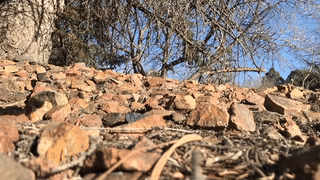Video
Yellowstone
The Playful, Chaotic Otter
So you turn away and begin walking, and you see something out the corner of your eye again. This time you're quick and you see them. They are swimming through the snowbanks like eels, gracefully flowing, and yet you laugh because you've never seen anything quite so illogical. You become mesmerized by their wiggle and hypnotic dance as they head for the nearest river or stream on the endless search for dinner, or lunch, or breakfast... maybe a quick snack. These little buggers are always hungry!
I like to think of the Otters as Yellowstone's court jesters. They will always leave you smiling and you'll look forward to their next performance if you can find them. Although they frequent Yellowstone’s major lakes, rivers, and large streams, they are not easy to spot. So when you do, it's always a special day. Otters don't hibernate, so your best time to see them is in winter. Their dark brown coats show up brilliantly on the white snow.
They are mostly crepuscular (active in twilight) but have been seen at all times of the day. They breed in late March through April and usually have one litter of two pups per year. The females and young ones remain together until the next litter and may temporarily join other family groups.
Otters can swim underwater up to 6 miles per hour and for 2–3 minutes at a time. They are quite clumsy and slow on land unless they find snow or ice, then can move crazy fast by alternating hops and slides, reaching speeds of about 15 miles per hour.
A few years ago, a friend of mine rescued an otter who had been hit by something. Probably a snowmobile. He nursed it back to health with the help of a local veterinarian. What I remember most about Gus... we called him Gus, was how cuddly he was. He really got used to humans being around him quickly. He was a friendly little guy and he made us laugh. He always tried to crawl up pants legs which could be rather awkward.
We really grew attached to him. It was so hard letting him go back to the wild where he belonged, but it felt wonderful at the same time. I can still see him swimming away from us. We saw him off and on a few times, and he seemed to be getting along fine, but we eventually lost track of him. I like to think he's still out there, slithering and squiggling through the snow, looking for his next adventure. =]:)













0 comments
Please let me know what you think. =]:)